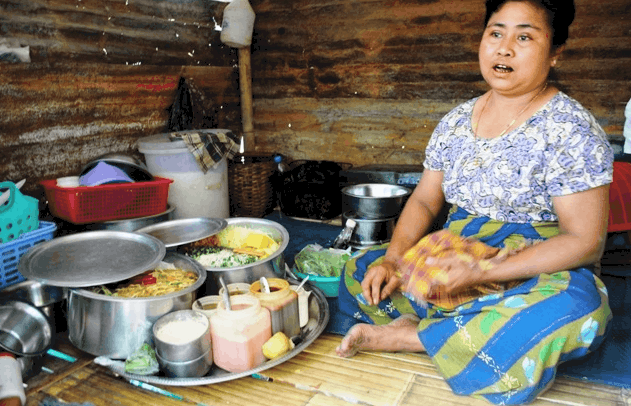
Miles de residentes desplazados por la violencia entre comunidades hace un año en esta ciudad central en Myanmar se les permite reconstruir sus hogares.
Launched in January, the project is expected to be completed in April 2014, just before the rainy season.
“There is still a lot of work and construction to be completed, but we are pleased to see that the process is moving in the right direction,” Pierre Péron, a spokesman for the UN Office for the Coordination of Humanitarian Affairs (OCHA), said from Yangon.
Más que 40 people were killed and over 12,000 desplazado, after a heated argument in a Meiktila gold shop on 20 marzo 2013 between its Muslim owner and Buddhist customers quickly degenerated into violence, with crowds setting fire to businesses, religious buildings and homes. This was the worst sectarian violence in Myanmar since the 2012 unrest in western Rakhine State, donde más de 120,000 Muslim Rohingyas remain displaced.
Más que 800 homes were destroyed and another 35 buildings damaged in Meiktila (Mandalay Region) from 20 a 22 marzo, Observador de derechos humanos reported.
Encima 4,000 still displaced
Un año después, más que 4,000 people remain displaced, mostly Muslims, who are living in five overcrowded camps for internally displaced persons (IDPs) in the Meiktila and Yin Daw, say district authorities.
Under the government plan, those with land deeds will be resettled in homes being built in Chan Aye. Those without will be resettled in 20 three-storey blocks to be built by the government and private donors in or near the town (either in Chan Aye or Thiri Mingalar).

Aye Sint, a 49-year-old Buddhist noodle seller believes outsiders were behind the deadly intercommunal violence that shook the central Burmese town of Meiktila on 20 marzo 2013
© Nyan Lynn/IRIN
sin embargo, some disapprove of the scheme. “It’s not fair,” said Phoe Thar, a 43-year-old Buddhist resident, now living in an IDP camp. “There are many people who lost their title deeds and related documents to fire.”
While government and international organizations are providing assistance to the IDPs, an OCHA mission to Meiktila in October 2013 found assistance had been scaled back due to budget limitations.
The mission also found shortages in camp clinics, reduced drinking water supplies, as well as the need for hygiene interventions in the camps.
Tensions abating?
Whatever complaints the IDPs may have, relations between the Buddhist and Muslim communities in Meiktila remain calm, with most residents still convinced the 2013 violence was the work of others.
“We still believe it was outsiders involved in the killing, looting and burning houses,” Aye Sint, a 49-year-old Buddhist noodles seller, whose customers include Muslims, insisted. “We never had such problems between us [Buddhists and Muslims] in our town before.”
sin embargo, many residents are cautious: To safeguard their communities, some have established neighbourhood watch groups – comprised of Buddhists and Muslims – to patrol their communities at night, said Aye Lwin, chief of Aung Zaya quarter. “We are doing our best not to let the same kind of violence happen in our area [again].”
nl/ds/cb
Carrera para reconstruir las casas destruidas Después de Comunidades Violencia
CompartirMAR
2014

Sobre el autor:
Estoy buscando para hacer una diferencia en las vidas de las personas que viven en la pobreza extrema y las que viven en condiciones inadecuadas de vida. He visto las condiciones en tanto la pobreza extrema y los desastres y creo que podemos hacer un mejor trabajo de ayudar a cabo; especialmente los bebés, niños, y las familias. Tenemos la suerte de vivir en Estados Unidos, y este es mi momento de devolver! ¿No le gustaría unirse a mí?